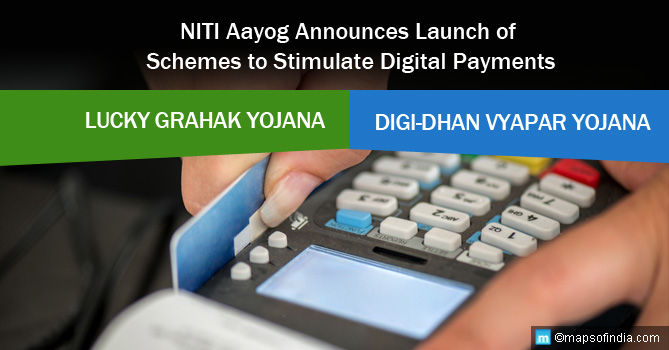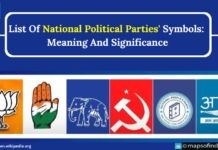The Indian Government has come up with an initiative in order to encourage digital modes of payment and it consists of a couple of components – Lucky Grahak Yojana and the Digi-Dhan Vyapar Yojana. The scheme is expected to reward both merchants and consumers who use digital payments for expenses related to personal consumption. It aims to bring into the fold the poor people, the small businesses and the lower middle class. The National Payment Corporation of India (NPCI) is expected to be the agency that will implement the programme. It needs to be said in this regard that NPCI is a nonprofit agency whose main responsibility is to steer the country towards a cashless society.
The main aim of these programmes
The primary purpose behind introducing the said programmes is to make sure that digital transactions carry a certain incentive with them so more people use such modes of payment. The main idea here is to ensure that the middle class and the poor increasingly use digital payments. The programme itself has been conceived keeping in mind the ways in which the various sections of the Indian society spend their money. For example, the poorest people using this programme can be in line to receive rewards by using USSD (unstructured supplementary service data). AEPS (Aadhaar Enabled Payment System) can be used by people in rural areas in order to take part in the programmes. The programme will come into effect on December 25, 2016, which is expected to be a Christmas gift for the country. This will culminate with a Mega Draw that will be held on April 14, 2017, on the very day Babasaheb Ambedkar Jayanti is celebrated across the country.
Some crucial details
As of now, the programme would be restricted to transactions in the range of Rs 3000 and Rs 50. It will also include all the transactions between consumers and merchants, AEPS transactions, and government agencies and consumers. A random draw will take place on the transaction IDs that are eligible for the programme. These IDs are generated automatically as and when a particular transaction is completed. NPCI is expected to develop a software programme for the same. It will also audit the programme – from the points of view of security and technique. This will make sure that the entire process maintains its integrity.
It is estimated that in the first phase – April 14, 2017 – this programme would make the government poorer by Rs 340 crores. After the first phase the national government would perform a review before a decision is reached on further implementation.
Lucky Grahak Yojana
This one is meant for the consumers, as the name would suggest. Here 15,000 lucky consumers will receive Rs 1000 each upon being nominated. This would go on for a period of 100 days. Consumers who use various modes of digital payment would be in line to get weekly prizes that come in three categories – Rs 1 lakh, Rs 500, and Rs 10,000. This will be inclusive of each and every digital transaction including the likes of UPI, AEPS, USSD, and RuPay cards. For the time being this programme would not include transactions done through the mobile wallets and credit cards of private banks.
Digi-Dhan Vyapar Yojana
This component is meant to benefit the merchants for every digital transaction conducted at their establishments. They can be in line to win weekly prizes in the range of Rs 50,000, Rs 2500, and Rs 5000.
Mega Draw
The draw will take into equation digital transactions between November 8, 2016 and April 13, 2017. There will be three mega prizes worth Rs 1 crore, Rs 25 lakh, and Rs 50 lakh. This will be for the consumers though. The merchants will be in line to gain three mega prizes in the region of Rs 50 lakh, Rs 12 lakh, and Rs 25 lakh.
Conclusion
At the moment India is taking some steps towards becoming a cashless society, and in such a juncture these programmes could well be interpreted as having history-making significance. Efforts are being made to make sure that people let go of their old habits and adopt the new ways quickly enough so that the modern age could be truly ushered in India in a proper way.
The Indian Government has come up with a number of steps in order to deal with the critical issue of corruption. A foundation for the same was laid on November 8 this year with the demonetization scheme. At that time, Narendra Modi had made it clear that digital payment was the way to go in order to combat issues like corruption and keep all transactions accounted.
The government is, by its own admission, taking a number of steps in order to deal with black money and corruption in the last couple of years. It was in February of 2016 that a number of initiatives had been taken in order to encourage digital payments and the entire action had been taken with a clear plan in mind.
Read More……
What will the RBI do with the old currency notes?
UN Study Pegs Growth Rate of Indian Economy at 7.6% for FY 2017-18
Airtel Launches Payments Bank; Is it a Big Deal?
Paytm, Mobikwik, Freecharge: eWallet Reviews and Comparison
How Will Rs 500, Rs 1000 Note Ban Impact Real Estate?





